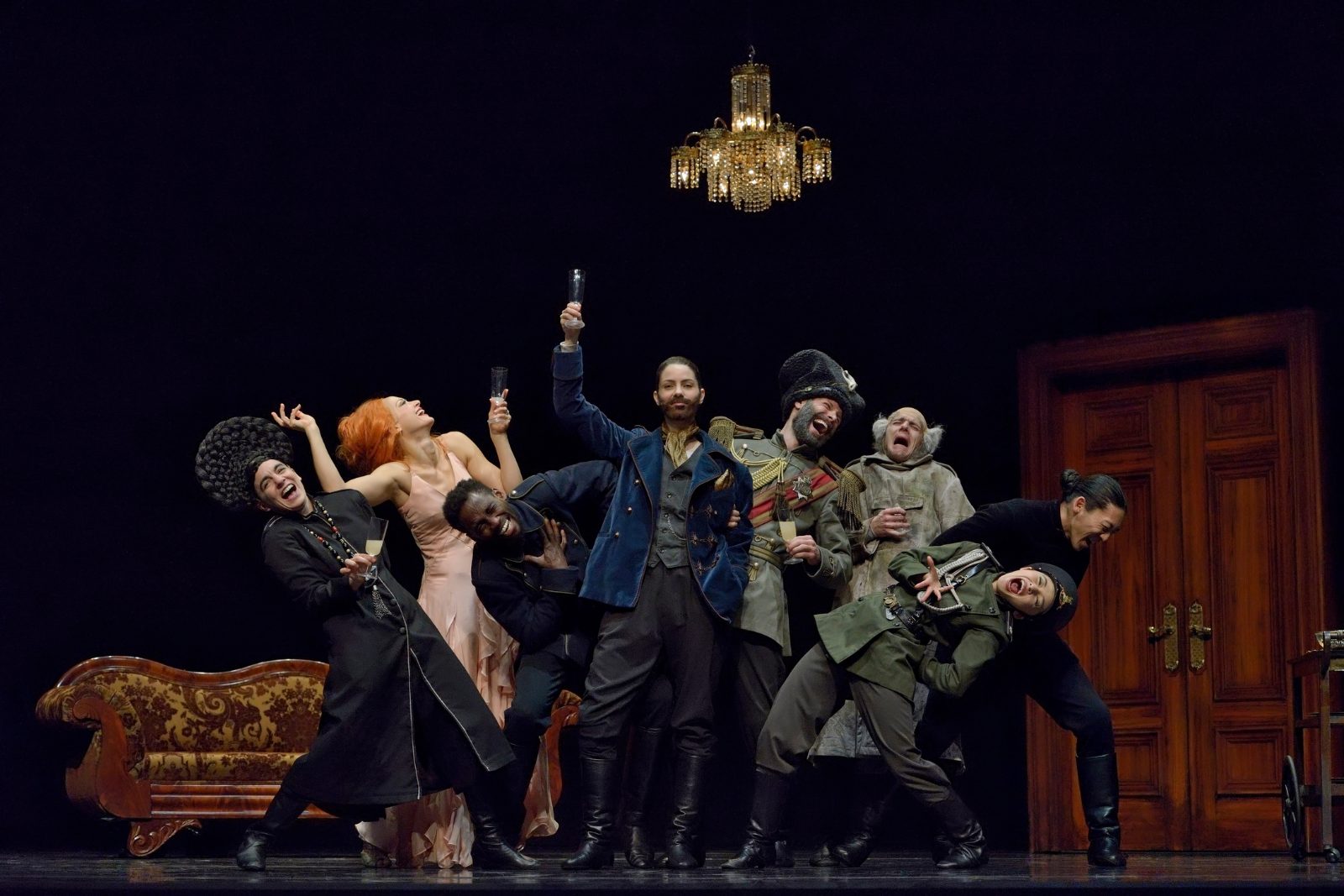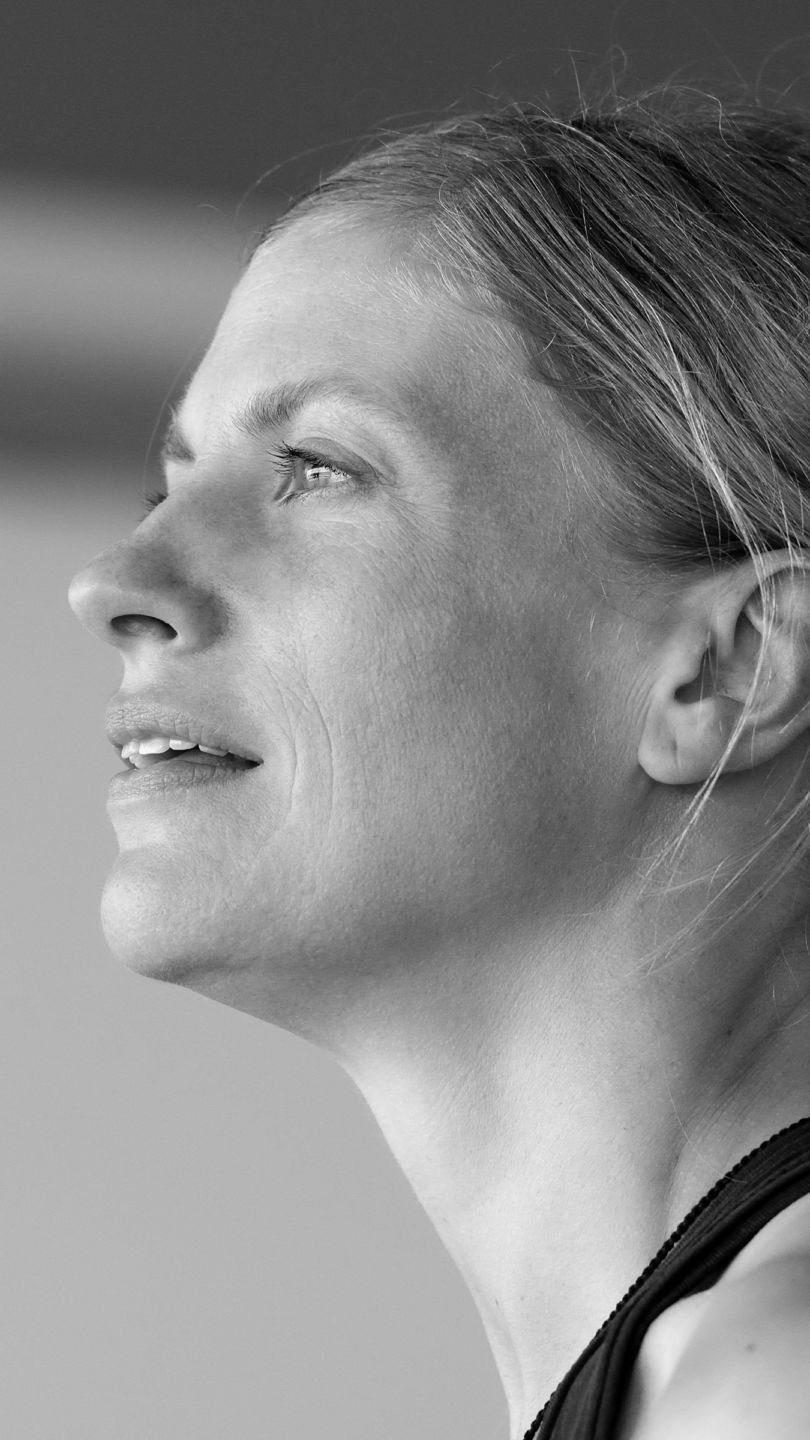Kidd Pivot's Crystal Pite returns with a Revisor that's more relevant than ever
Emerging from a hiatus, the renowned choreographer still finds herself compelled to explore the rhythms of language in dance
Revisor plays with the physical language of farce. Photo by Michael Slobodian
DanceHouse presents Kidd Pivot’s Revisor at the Vancouver Playhouse, March 30 to April 2
IT’S BEEN TWO years since Kidd Pivot’s stunning Revisor had its European tour cut short due to the pandemic. And so finally reuniting to rehearse it again didn’t feel real to its choreographer, Vancouver’s Crystal Pite.
That is, until the elaborately staged dance-theatre work’s furnishings came out of storage.
“The desk, the lamp, the chair, the filing cabinet: it feels like we have our tools, our magical items, at the ready,” the internationally celebrated artist tells Stir from her East Van home before the remount at DanceHouse. “There’s this uplifting, heartening feeling. I said to [dancer] Jermaine [Spivey] yesterday, ‘How did I get through two years without this?’ To bring it back together, this show that we love so much and that feels so relevant right now: there’s a lot of excitement and emotion. I’ve been laughing and crying!”
Anyone lucky enough to have caught Revisor’s soldout premiere here in 2019 knows the word “relevant” is an understatement. The piece speaks directly to what has happened in Russia, a leader mad with power who uses deception to fuel his quest for more control.
A satire about greed, deception, and how power corrupts, Revisor is set to a script voiced by Canadian actors and penned by Pite’s collaborator, theatre artist Jonathon Young. It’s based on Russian Nikolai Gogol’s 1836 play The Government Inspector. In the story, a small town mistakes a poor civil servant for a high-ranking official, and he uses that false identity to collect bribes and get drunk off power before fleeing.
‘Revizor’ is the Russian word for “Government Inspector"--and Young mines the idea that Gogol’s farce about political corruption has been revised over time. He and Pite make their own clever revisions to the work, deconstructing and distorting it into abstract and sometimes delirious lengths, remixing and looping the dialogue. Pite says she and the team call this section of the work the “decon”: “It’s when the play kind of pulls itself apart.”
Through Pite’s choreography, Revisor is arresting in the way it stretches, stylizes, and warps language and its meaning. The piece moves from meticulously detailed, hyper-exaggerated pantomime into something far more complex, words driving the dancers. At the same time, Pite riffs on the physical language of farce, making creative use of its necessary props–doors, desks, and all the furnishings she mentions above. (It’s an approach so innovative and effective, the show has just been nominated for one of Britain’s Olivier Awards—the U.K.’s biggest annual stage prizes.)
In rehearsals for this remount, Pite is constantly reminded of the intricacy of what she’s asking of the cast–which includes four new members.
“There’s the complexity of the text itself, and then inhabiting it as a full-body lip synch and animating it,” she says. “Also, how the breath works in the body: where does the character inhale?”
In recent years, Pite and Young have been experimenting with this complex new vocabulary, finding fresh territory between theatre and dance. That began with 2015’s Olivier-winning Betroffenheit, the dancers embodying Young’s own testimonial of trauma. They continued with 2016’s The Statement for Nederlands Dans Theater–a dazzlingly taut exploration of boardroom power struggles and corporate speak that Vancouverites recently got the chance to see at Ballet BC’s Reveal + Tell program. DanceHouse fans also witnessed Pite playing with voice-over in a filmed version of Body and Soul’s 2019 premiere at the Paris Opera Ballet; in it, French actor Marina Hands read stage instructions (“Two figures are seen. One is on the floor. The other is moving back and forth”) that echoed throughout the surreal three-act piece.
Pite has been coming out of a hiatus–planned well before the pandemic–and, recharged and reinspired, she’s still eager to pursue the infinite possibilities of blending spoken text and dance.
Crystal Pite. Photo by Michael Slobodian
“I’m still interested in it for so many reasons,” she says. “It allows me as a choreographer to work with much more complex stories. I never want the fact that dance is mute to be a barrier. Also, there’s something quite amazing about how language is affecting my choreography. For me it’s even kind of revelatory to find a physical language to meet that text.
“It’s not going to replace the other work that I do,” stresses the artist. “But using the voice-over text as an animating force in the body feels like it's really opening a physical complexity. I’m just thinking: what other text can we dance to? What other voices?”
Pite will have many opportunities to consider those questions in the coming months. Text is a driving force at Nederlands Dans Theater in May, when she’ll unveil a world premiere, crafted in collaboration with theatre artist Simon McBurney, artistic director of London company Complicité. It’s the first in a triptych of collaborations between the two renowned artists between now and 2025.
“It’s super fun to be at NDT right now because Emily Molnar is directing,” Pite shares, referring to the former Ballet BC artistic director who moved to The Hague in 2020. (Both artists danced for Ballet BC, going on to perform for the Frankfurt Ballet under the legendary William Forsythe.)
Later this year, in another timely work, Pite will start to craft two more movements of Henry Gorecki’s sombre Symphony No. 3 as a follow-up to her acclaimed Flight Pattern–a meditation on the world’s refugee crises–for London’s Royal Ballet.
She’s one of the busiest choreographers on the planet right now, so it’s always a surprise to be reminded that work doesn’t always come easily for her. And that conjuring a new creation for the world’s biggest dance companies can be as intimidating for her as anyone else.
“I’ve had the time to think about it,” she says of the Royal piece. “I do have a glimpse of what it might be. So I feel more excited than just being full of dread. If you even have a small idea of it, it’s bearable.”
Elsewhere this year, numerous Pite works will see remounts on stages around Europe and North America; her serene Solo Echo opens in one of the Royal’s mixed program at Covent Garden this week. Back from her break, amid all the other work, she hopes to hook up with her own company’s Revisor tour–which will finally head back on the road again, after Vancouver, to France, Portugal, Sweden, and beyond.
It’s a bit like leaping into the great unknown–something Pite’s already famously celebrated for in her groundbreaking choreography.
“Is it too soon to bring everybody back and try to pull it off?” Pite asks. “We’re just going to keep going until we can’t anymore.”














